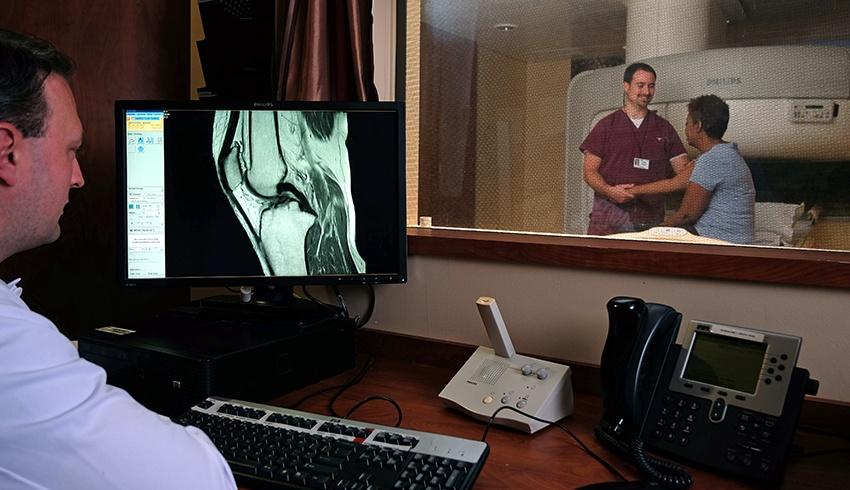Diagnostic imaging describes a variety of non-invasive methods of looking inside the body to help determine the causes of an injury or an illness, and to confirm a diagnosis. It is also used to see how well your body is responding to a treatment for an illness or a fracture.
The most common types of diagnostic imaging include the following services.
The X-ray
The x-ray is perhaps the most well-known diagnostic imaging service. Physicians use them to see inside your body. The x-ray machine produces a high-energy beam that bones and dense tissue are unable to absorb, but which passes through the rest of your body. This produces an image that allows doctors to see your bones and any damage they may have suffered.
Computed Tomography (CT)
This is a test that many people know as a “cat scan.” It combines a series of X-ray images taken from different angles. Then, computer software creates cross-sectional images (slices) of the bones, soft tissues, and blood vessels inside the body. It provides a more complete picture than regular x-rays. It is often used to quickly examine people who could have internal injuries from some kind of trauma.
Magnetic Resonance Imaging (MRI)
Instead of radiation, MRIs use a very strong magnet to get an image of the patient’s body.
There are 4 different types of MRI machines:
- Closed – A traditional tube or closed machine where the patient lies down and goes inside the machine for imaging.
- Wide Bore – This machine is sometimes referred to as an “Open MRI” but it’s really just a Closed MRI with a wider opening.
- True Open – A truly open design is open on all four sides. It eliminates much of the discomfort for those who feel claustrophobic in a traditional MRI machine.
- 3T – The “T” stands for Tesla, which is the unit of measurement used to quantify the strength of a magnetic field. A 3T MRI is the most advanced test of its type in use today. The machine is like the traditional MRI in that it is a closed design. The test itself usually takes less time to perform. The images are high-resolution and detailed. This enables radiologists to differentiate between benign and more serious medical conditions.
3D Mammography
A 3-D Mammogram takes images of thin “slices” of the breast from different angles. Then it uses computer software to reconstruct an image to analyze for abnormalities. The process is similar to the way a CT scanner produces images of structures within the body.
A 3-D Mammogram can detect 35% of cancers sooner. Plus, since the picture is much clearer you are less likely to be called back for further imaging or to need a biopsy.
DEXA Scan
Also called a bone density scan, a DEXA scan is the only scan that enables a doctor to diagnose osteoporosis before a fracture occurs. This is very significant considering that “a woman’s risk of fracture is equal to her combine risk of breast, uterine, and ovarian cancer,” according to the National Osteoporosis Foundation.
Ultrasound
Most of the time you hear about an ultrasound, it’s in reference to examining a fetus during pregnancy. But ultrasounds are actually used for a variety of diagnostic purposes. These include pediatric, vascular, and testicular cases.
Unlike an x-ray, ultrasounds do not use radiation to produce an image. Instead, they use sound waves that reflect off tissue in your body to create an image.
PET/CT Scan
PET/CTs uses tracers that are injected into your vein to highlight the flow of fluids in your body. This shows doctors how well your organs and tissues are operating. PET/CT scans are often used to measure:
- Blood flow
- Oxygen use
- How your body uses sugar
At Medical Imaging of Fredericksburg, our newest PET/CT machine is able to detect disease on the molecular level, providing more accuracy and earlier detection.
Diagnostic Imaging – A Faster Diagnosis
Thanks to diagnostic imaging, many illnesses can be diagnosed faster than ever before. They’re quick and easy for the patient and provide little interruption to your day. To top it off, they’re affordable and can be completed as part of an annual health screening.
Want recommendations personalized for you? Head over to our health scan screener and find out which health scans are best for you.





